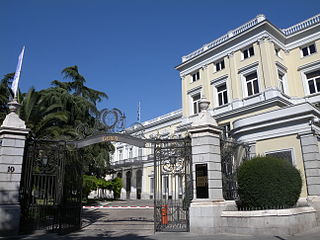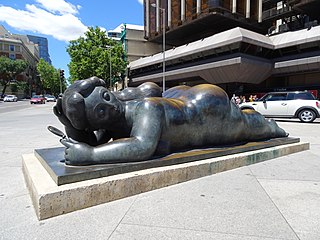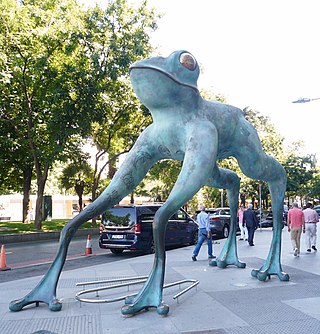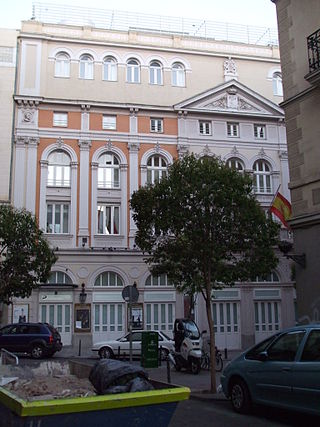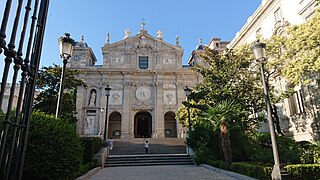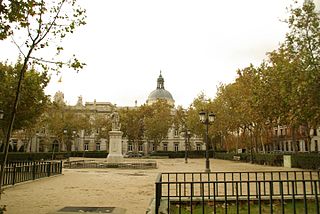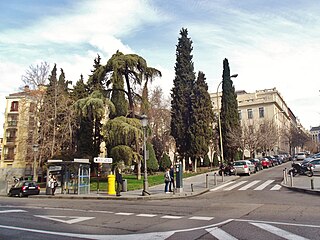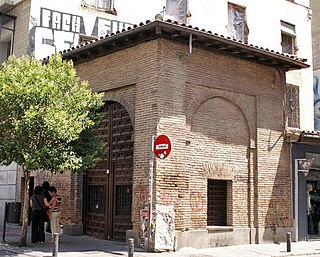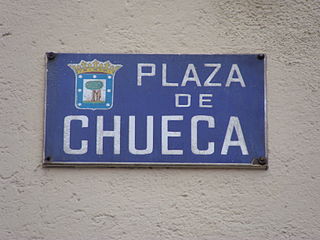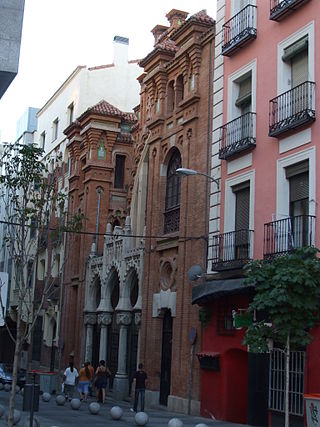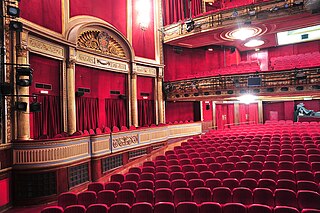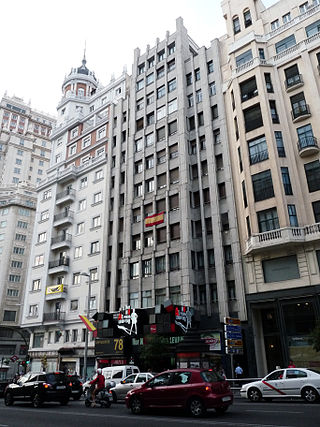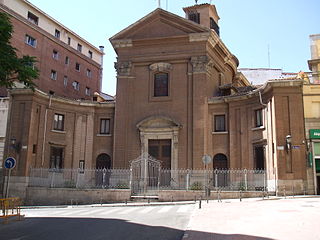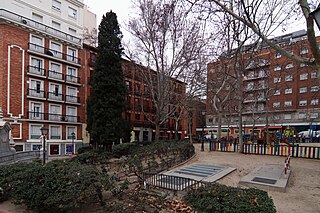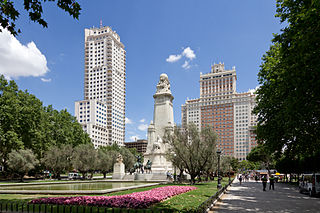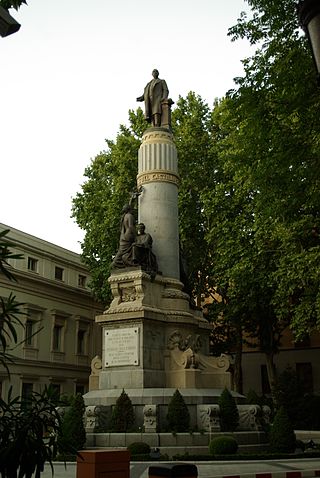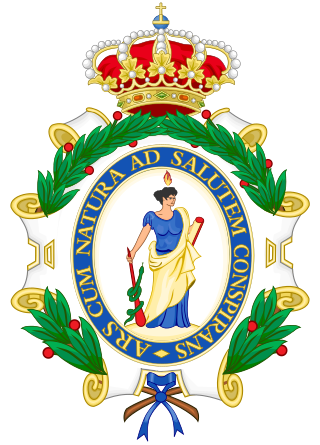Self-guided Sightseeing Tour #2 in Madrid, Spain
Legend
Guided Free Walking Tours
Book free guided walking tours in Madrid.
Guided Sightseeing Tours
Book guided sightseeing tours and activities in Madrid.
Tour Facts
10.1 km
302 m
Experience Madrid in Spain in a whole new way with our free self-guided sightseeing tour. This site not only offers you practical information and insider tips, but also a rich variety of activities and sights you shouldn't miss. Whether you love art and culture, want to explore historical sites or simply want to experience the vibrant atmosphere of a lively city - you'll find everything you need for your personal adventure here.
Activities in MadridIndividual Sights in MadridSight 1: Iglesia Anglicana Episcopal de San Jorge
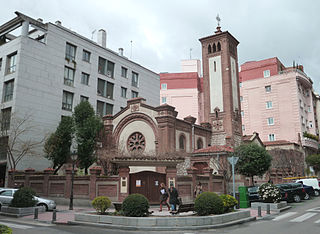
St George's Anglican Church, also known as Iglesia Anglicana-Episcopaliana de San Jorge or, simply Capilla Británica, is a small Anglican church located in the barrio of Recoletos, district of Salamanca, Madrid, Spain, which belongs to the Diocese in Europe of the Church of England. The church was built in 1923 and was consecrated in March 1925.
Sight 2: Iglesia Evangélica Alemana
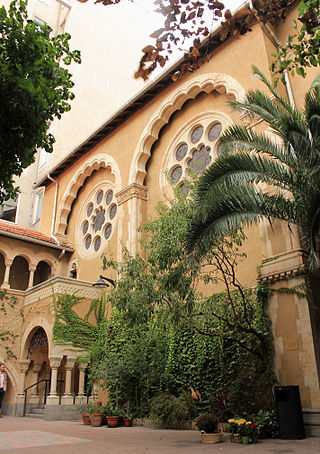
The German-speaking Evangelical Church of Madrid (Spain) is a temple of the German Evangelical Church, located at No. 6 Paseo de la Castellana. It is located near the Plaza de Colón, and was originally the German embassy in Spain. The temple has a courtyard in which a German-style Christmas market is set up at Christmas.
Sight 3: Jardines del Descubrimiento

Jardines del Descubrimiento is a park in the Spanish city of Madrid, located next to the Plaza de Colón. Dedicated to the discovery of America, it has a monument in their eastern sector, as well as a mast with a Spanish flag.
Sight 4: National Archaeological Museum of Spain
The National Archaeological Museum is a archaeology museum in Madrid, Spain. It is located on Calle de Serrano beside the Plaza de Colón, sharing its building with the National Library of Spain. It is one of the National Museums of Spain and it is attached to the Ministry of Culture.
Wikipedia: National Archaeological Museum (Madrid) (EN), Url
Sight 5: Palacio del Marqués de Salamanca - Fundación BBVA
The palace of the Marquis of Salamanca is located on the Paseo de Recoletos in Madrid, Spain. It was built by José de Salamanca y Mayol, Marquis of Salamanca, in the mid-nineteenth century, in an area that, although it was within the enclosure limited by the fence of Felipe IV, was still suburban. During the nineteenth century it became the property of a bank, which subjected the building to various modifications to adapt it to business use. Since 2000 it has been an asset of cultural interest in the category of monument. It is the Madrid headquarters of the BBVA Foundation.
Sight 6: Monument to Christopher Columbus
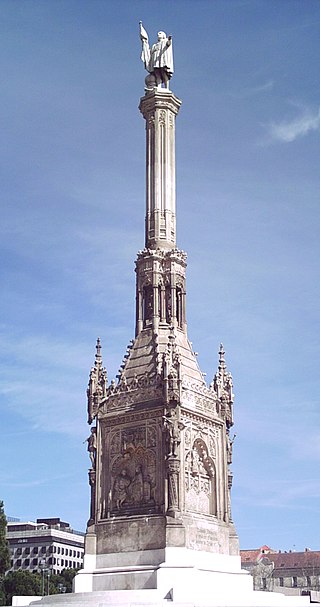
The Monument to Columbus is a monument in Madrid, Spain. It lies on the namesake square, the Plaza de Colón. The basement of the monument is a Gothic revival work by Arturo Mélida while the topping statue is a work by Jerónimo Suñol.
Sight 7: Mujer con Espejo
Woman with Mirror is a 1987 bronze sculpture in Madrid, Spain, by the Colombian sculptor Fernando Botero. The 1,000-kilogram (2,200 lb) sculpture is of a nude woman with a large figure lying on her front; this body shape is a trademark of the sculptor.
Sight 8: Museo de Cera
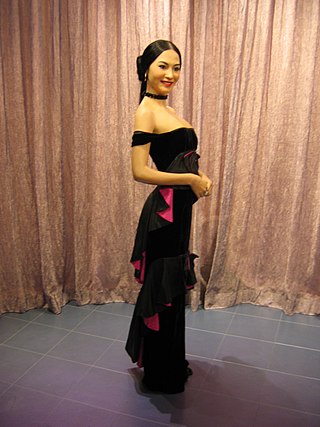
A wax museum or waxworks usually consists of a collection of wax sculptures representing famous people from history and contemporary personalities exhibited in lifelike poses, wearing real clothes.
Sight 9: Rana de la fortuna
Lucky Frog is a bronze sculpture of a frog by the Spanish artist dEmo, installed in Madrid, Spain, in 2014, outside the Casino Gran Madrid on the Paseo de Recoletos. The sculpture is 5 metres (16 ft) tall and weighs 2,000 kilograms (4,400 lb).
Sight 10: Teatro María Guerrero
The Theatre of María Guerrero is a theatre located in Madrid, Spain. It was declared Bien de Interés Cultural on 1 March 1996. It is the home of the national theatre of Spain, Centro Dramático Nacional.
Sight 11: Parroquia de Santa Bárbara
The Santa Barbara, also known as Church of the Monastery of the Salesas Reales is a Catholic church, built in Neoclassic style, in central Madrid, Spain. It is one of a number of Spanish churches dedicated to St Barbara.
Sight 12: Plaza de la Villa de París
The Plaza de la Villa de París, formerly Plaza del Palacio de Justicia, is a landscaped space in the Justicia neighborhood, in the central district of the city of Madrid, Spain. The large area is delimited by the streets of General Castaños, García Gutiérrez and Marqués de la Ensenada. It is presided over by the architecturally balanced complex of the buildings of the Supreme Court and one side of the National Court.
Sight 13: Plaza de las Salesas
The Plaza de las Salesas or Plaza del Convento de las Salesas is a landscaped space in the central district of the city of Madrid, Spain, bounded by the streets of Bárbara de Braganza, Conde de Xiquena, Santo Tomé, Fernando VI and General Castaños. It owes its name to the old and extensive complex of the monastery of the Salesas Reales, founded in 1748.
Sight 14: Iglesia de San Antón
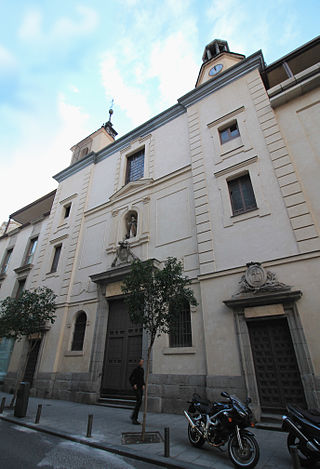
The church of San Antón is a religious temple located in the city of Madrid, annexed to the building of the Pious Schools, on Hortaleza Street.
Sight 15: Museo del Romanticismo
The Museum of Romanticism is an art museum in Madrid, Spain, devoted to Romanticism. It was inaugurated in 1924 as Museo Romántico. It is one of the National Museums of Spain and it is attached to the Ministry of Culture.
Sight 16: Catedral del Redentor
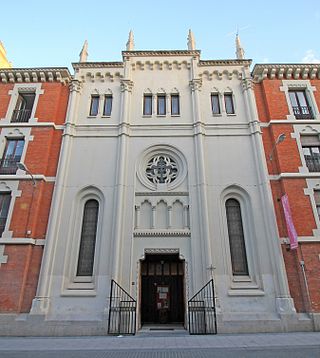
The Cathedral of the Redeemer is a Protestant (Anglican) church in Madrid. It is the principal church of the Reformed Episcopal Church of Spain which is a member of the Anglican Communion.
Sight 17: Fuente de la Fama
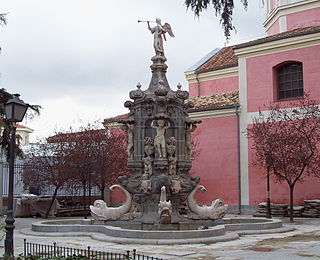
The Fountain of Fame is a Baroque fountain located in Madrid, Spain.
Sight 18: Parroquia San Ildefonso
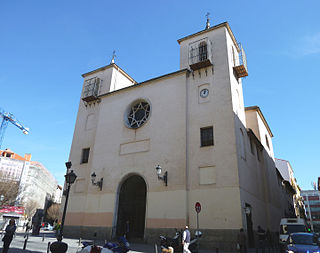
The Church of San Ildefonso y de los Santos Niños Justo y Pastor is a religious building, intended for Catholic worship, located in the square of the same name in the city of Madrid (Spain).
Sight 19: Capilla de Nuestra Señora de la Soledad
The Humilladero de Nuestra Señora de la Soledad is a small chapel located at number 44 Calle de Fuencarral in Madrid, on the corner of the old Calle de Santa María del Arco. It was built in 1712 because in the vicinity there was a painting of the Virgin of Our Lady of Solitude, to which the residents of the area professed great devotion. The small building is made of brick and ashlar masonry, and access to the temple is through a door crowned by a semicircular arch. It is the only one of its kind that remains in Madrid, along with the Rinconera virgin in the house-palace of Ricardo Augustín in the Plaza de Ramales.
Sight 20: Plaza de Chueca
The Plaza de Chueca, formerly called Plaza de San Gregorio Magno, is a small pedestrian space in the Spanish city of Madrid, in the Justicia neighborhood, Centro district, framed by Gravina Street, to the east, and Augusto Figueroa Street to the west, next to the beginning of the Gran Vía in Madrid. Dedicated since 1943 to the Madrid composer Federico Chueca, it gives its name to the entire neighbourhood. At the beginning of the 21st century it appeared in tourist guides as the heart of the gay community in the capital of Spain, although the fact did not yet appear in the work of some chroniclers, street studies and encyclopedias about Madrid.
Sight 21: Real Oratorio del Caballero de Gracia
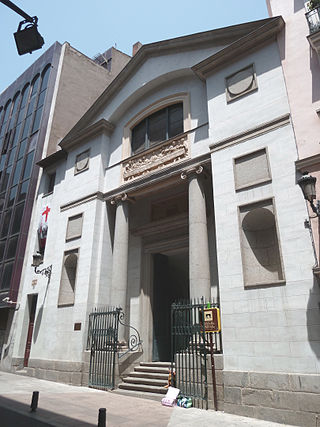
The Oratory of Caballero de Gracia is a neoclassical church (oratory) located in Madrid, Spain. It is named after Jacobo de Grattis who was known as the Caballero de Gracia.
Sight 22: Casa Matesanz
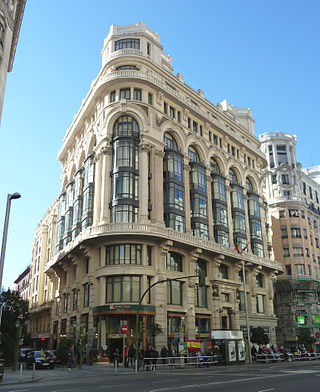
The Matesanz house is a building located at number 27 Gran Vía Street in Madrid (Spain). Its construction was completed in 1923 and was designed by the architect Antonio Palacios Ramilo. The architectural style is heavily influenced by the Chicago School. Its name comes from the surname of the first owner of the building.
Sight 23: Palacio de la Música
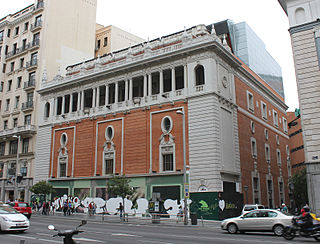
The Gran Vía 35 Building, also known as Palacio de la Música is a theater located at Gran Vía 35 in Madrid. It was commissioned by the Sociedad Anónima General de Espectáculos (SAGE) and built by architect Secundino Zuazo Ugalde in 1926.
Sight 24: Iglesia de San Martín
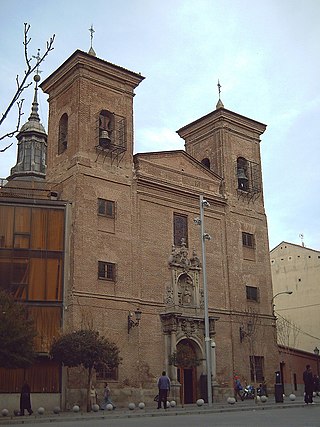
The Church of San Martín is a church located in Madrid, Spain. It was declared Bien de Interés Cultural in 1995.
Sight 25: Teatro de Lara
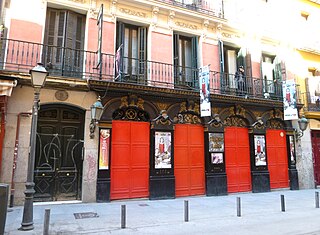
The Lara Theatre is an old Italian-style theatre built in 1879 at number 15 of the Corredera Baja de San Pablo in Madrid's Barrio de Maravillas, in the surroundings of what has been known as the Malasaña area since the last third of the twentieth century. It was born from the private initiative of the "plutocrat Cándido Lara", and was inaugurated on September 3, 1880. Among the most important premieres at the festival, Los interés creados, by Jacinto Benavente, in 1907, and Falla's ballet El amor brujo, in 1915, stand out. It has a capacity of 464 people and nine boxes.
Sight 26: Real Iglesia de San Antonio de los Alemanes
Saint Anthony of the Germans is a Baroque, Roman Catholic church located at the corner of Calle de la Puebla and Corredera Baja de San Pablo Madrid, Spain. It is noted for its baroque interior decoration. It was declared Bien de Interés Cultural in 1973.
Sight 27: Teatro Alfil
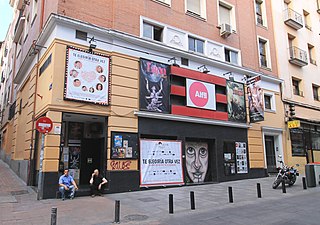
The Alfil Theatre is a venue located in the University district, in the Centro district (Madrid). The theatre is a building designed by the architect José Aspiroz that is located on Calle del Pez, founded in 1948 initially as a morning session cinema, called Cine Pez. In 1971 it was transformed into a small theater. The company was owned by brothers Luis and José García Ramos. In January 1993 an order was issued to close the premises by councillor Ángel Matanzo, an order that was suspended by the mayor José María Álvarez del Manzano, when the Yllana company took over the situation. The theater has managed to survive in the first decade of the 21st century thanks to the support of this company. In 2006 the theatre was attacked by an incendiary bomb, which was defused before its explosion, during a play by actor Leo Bassi.
Sight 28: Iglesia del Monasterio de Benedictinas de San Plácido
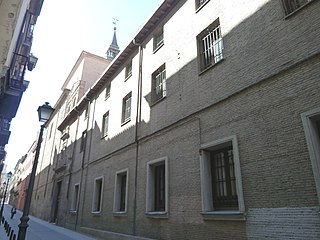
The Convent of San Plácido is a convent located in Madrid, Spain. It was declared Bien de Interés Cultural in 1943.
Sight 29: Iglesia de la Buena Dicha
The Church of la Buena Dicha is a church located in Madrid, Spain.
Sight 30: Teatro Rialto
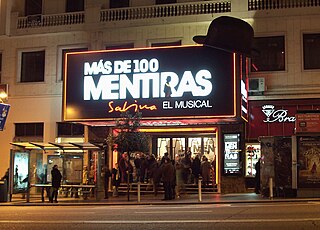
The Rialto Theatre is a venue in Madrid, located in the Rialto building, number 54 Gran Vía Street. It was inaugurated in 1930 as a cinema and became popular with the first films of Imperio Argentina and, later, for being the premiere room of El último cuplé, Sara Montiel's "magnum opus".
Sight 31: Teatro Arlequín Gran Vía
The Arlequin Theatre is a small theatre hall in Madrid (Spain), located at number 5 Calle de San Bernardo, next to Gran Vía, on the ground floor of a large building, within the set of services known as Los Sótanos. Created in 1965, after several renovations it has about 350 seats, and in 2014, it took the name of Arlequín Gran Vía.
Sight 32: Teatro Lope de Vega
The Lope de Vega Theatre is a theater in Madrid, Spain.
Sight 33: Teatro Gran Vía
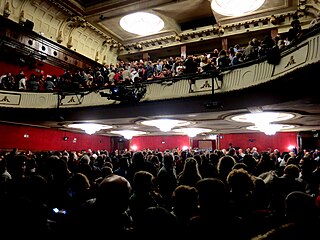
The former Gran Vía cinema, then Teatro Compac Gran Vía in Madrid, then Teatro de la Luz Philips Gran Vía and now "Teatro EDP Gran Vía" is an entertainment venue in the capital of Spain located at number 66 Calle Gran Vía.
Sight 34: Teatro Coliseum
The Coliseum building is a building in the Spanish city of Madrid, located at number 78 Gran Vía Street, in its last section. Built in the early 1930s, it has a theatre on its ground floor, although in the past these facilities were also used as a cinema.
Sight 35: Parroquia de San Marcos
The Church of San Marcos is a parish church located in Madrid, Spain. It was designed by Ventura Rodríguez, and it one of a number of surviving buildings by this architect in the city.
Sight 36: Plaza de Cristino Martos
The Plaza de Cristino Martos is an irregular space between the streets of La Princesa, to the south, and the confluent streets of San Bernardino, Manuel, Duque de Liria and Conde Duque, to the north-northeast. Although it was previously called the Plaza de los Afligidos, since 1895 it has been named after the orator Cristino Martos.
Sight 37: Fuente de los Afligidos
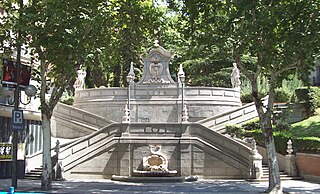
The Fountain of the Afflicted, also known as the Cristino Martos fountain, is a fountain in the city of Madrid located between Calle de la Princesa and Plaza de Cristino Martos. The original fountain, also called the fountain of San Joaquín, was replaced in 1952 by the one that has since been part of the monumental complex dedicated to the Spanish doctor and bacteriologist Jaume Ferran i Clua.
Sight 38: Plaza de España
Plaza de España is a large square and popular tourist destination located in central Madrid, Spain at the western end of the Gran Vía. It features a monument to Miguel de Cervantes Saavedra and is adjacent to two of Madrid's most prominent skyscrapers. Additionally, the Palacio Real is only a short walk south from the plaza. After 2+1⁄2 years of renovation, on 22 November 2021, the square was reopened for pedestrians.
Sight 39: Cánovas del Castillo
The Monument to Cánovas del Castillo is an instance of public art located in Madrid, Spain. The monument consists of a bronze statue of Antonio Cánovas del Castillo by Joaquín Bilbao at the top of a pedestal designed by José Grases Riera that features additional sculptural elements by Bilbao.
Sight 40: Real Academia Nacional de Medicina de España
The Royal National Academy of Medicine is a Spanish institution dedicated to the study, research and promotion of the medical sciences. It's motto is Ars cum natura ad salutem conspirans, "Art collaborating with nature for health".
Wikipedia: Royal National Academy of Medicine (EN), Website, Twitter, Facebook, Instagram, Youtube
Share
How likely are you to recommend us?
Disclaimer Please be aware of your surroundings and do not enter private property. We are not liable for any damages that occur during the tours.
GPX-Download For navigation apps and GPS devices you can download the tour as a GPX file.

